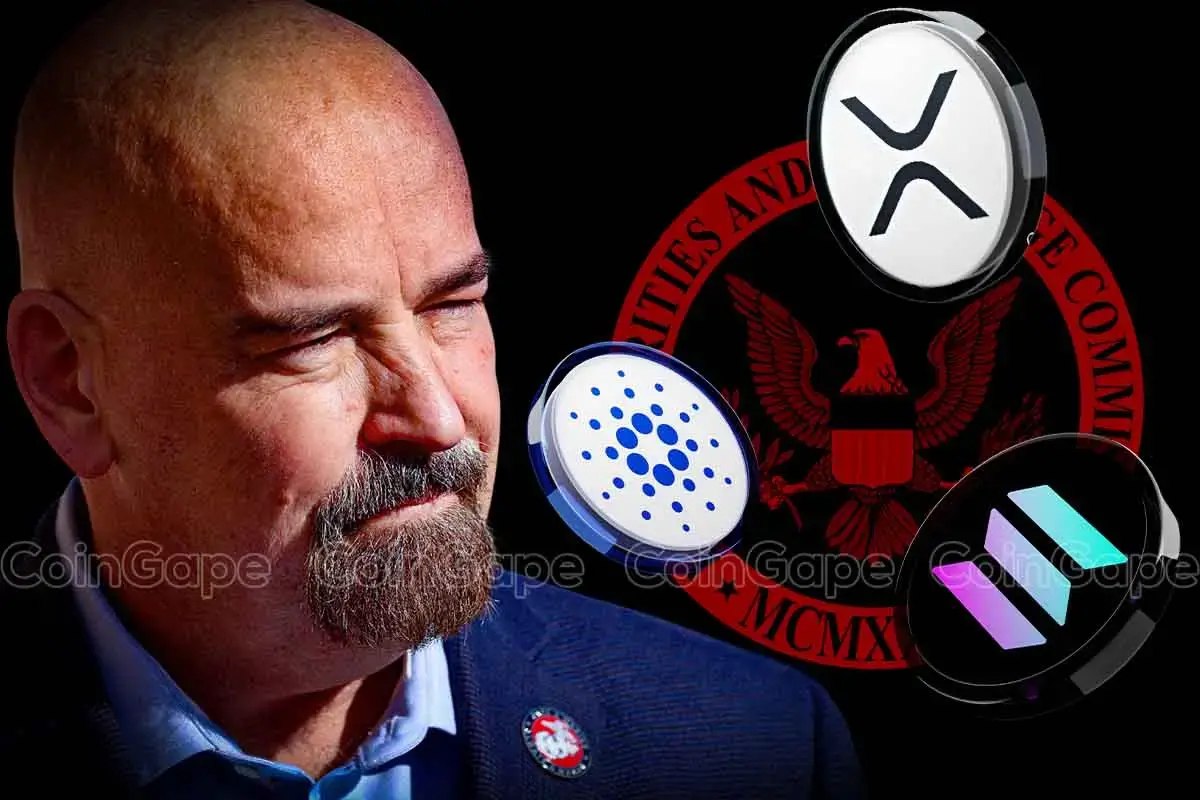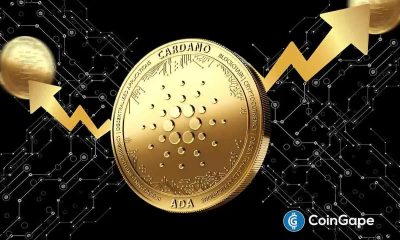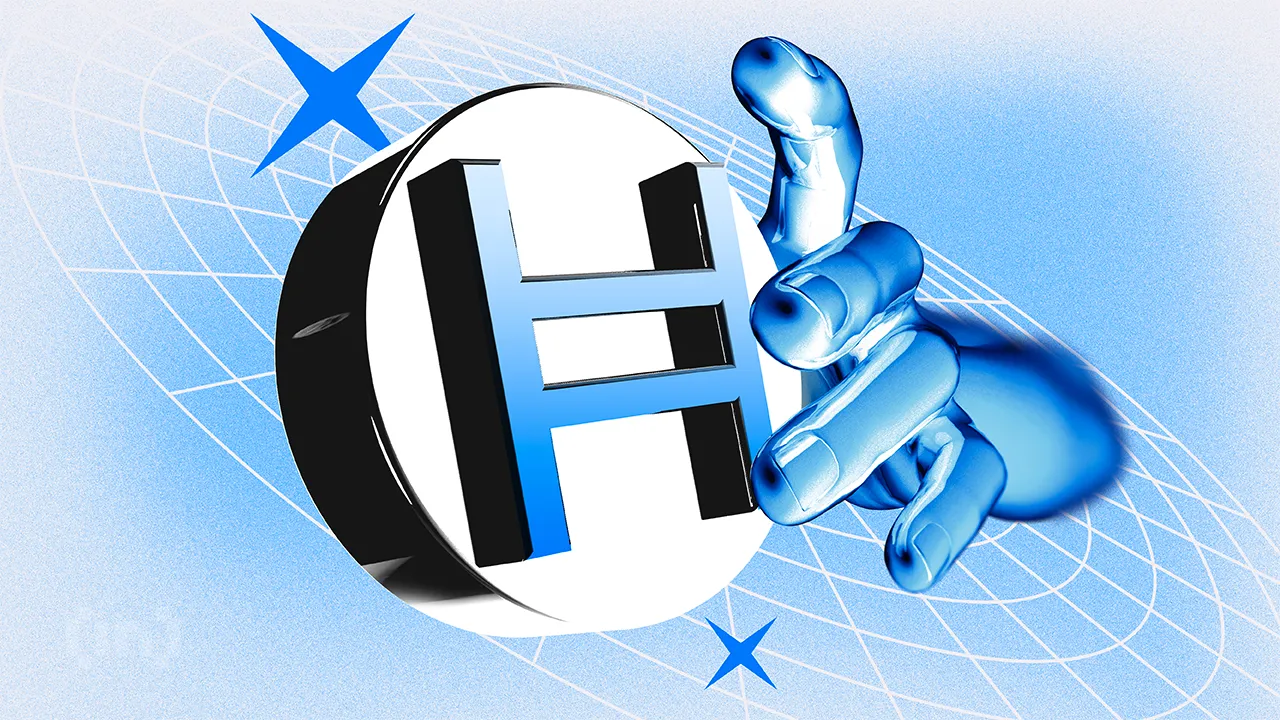Regulation
Federal Reserve Meeting Major Highlights and Key Points

The Federal Reserve lowered the target range for the federal funds rate by 50 basis points on Wednesday. This action brings the rate to a new range of 4.75% to 5.00%, which is the first decline in four years. The decision is in line with the Fed’s policy of ensuring that inflation is kept in check without jeopardising the stability of the economy.
Federal Reserve’s Justification for Rate Cut
The Federal Reserve announced the rate cut citing recent economic figures that pointed to growth at a steady pace, but with some moderation. Although job creation has slowed down and the unemployment rate has risen marginally, inflation is slowly moving towards the Fed’s target of 2%.
The central bank considers the outlook for the economy as still cloudy however, it views the risks to achievement of the dual mandate as evenly split.
Chair Jerome Powell noted that this decision is a small step to fine-tune policy to help maintain economic conditions. He told the market that the Fed is still determined to meet its employment and inflation targets. In addition, the Fed is likely to go on reviewing the data flow and may change the course of its policy should new economic circumstances occur.
Powell’s Perspective on the Economic Landscape
Jerome Powell noted that the US economy is healthy, and the economic growth is expected to remain strong. Inflation is gradually coming down while the labor market remains robust even as job creation slows down.
The Fed Chair emphasized that the Fed’s goal is to return inflation to its target level without causing a sharp increase in unemployment, which is typical for disinflation.
The head of the central bank also added that the low interest rate environment that has been observed in the previous years is not expected to continue in the future. Powell admitted that the neutral rate – the interest rate that does not stimulate or hinder economic growth– could be much higher now but it is still unclear just how high it is. This shift is a break from previous monetary policies that have involved extended periods of near-zero interest rates.
Reactions to the Federal Reserve’s Decision
However, the rate cut was not supported by all members of the Federal Open Market Committee (FOMC) as the Fed Governor Michelle Bowman voted for a 25 basis point cut. Nevertheless, the Fed Chair stressed that there was consensus within the committee regarding the need for policy change. He stressed that the decision would be taken from one meeting to another, considering the current and forecasted trends.
Some of the investors have been supportive but many of them have raised their concerns that the 50 basis points cut was too much. Financial markets expressed their reaction with keen interest with the S&P 500 and the Dow Jones setting new highs after the announcement. However, concerns over the size and the time of the cut diminished the rally, as some think that the economy is still quite healthy and did not necessitate such a deep cut.
Yes, that’s what the stock market wanted from the #FOMC This is the S&P 500. pic.twitter.com/O6FKSdRfEY
— John Authers (@johnauthers) September 18, 2024
Moving forward, the Federal Reserve’s Summary of Economic Projections (SEP) indicates that interest rates may fall even more in 2025 and 2026. According to the SEP, rates could be at 4.25% to 4.5% by the end of this year with more possible cuts to follow. According to its current forecasts, the central bank expects interest rates to reach 2.9% by 2026, which may suggest a further softening of monetary policy.
While the Fed decided to decrease rates, Jerome Powell noted that this does not mean that the same trend will persist in the future. He emphasized that each decision will be made based on current and future economic conditions and information. Thus, the market participants should not anticipate the central bank to deliver similar decisions at the subsequent meetings.
Labor Market and Inflation Considerations
The Federal Reserve has also paid keen interest to the labor market leading to this rate cut. As the Fed Chair pointed out, although job creation has decelerated in the past few months, the labor market is still very close to full capacity. However, the Fed is keeping a close eye on these trends, as a sharp decline in job growth could be indicative of an economic decline.
Concurrently, inflation remains the primary concern for the Federal Open Market Committee (FOMC). The Fed Chair stated that, according to the PCE price index, inflation is projected to decline to 2.2% in August from 2.5% in July. This action takes inflation rate nearer to the Fed’s 2% target, thus strengthening the Fed’s stance on the policy adjustment.
Despite the positive signs, some experts worry that the Fed might be acting too quickly. They argue that the U.S. economy remains robust, with unemployment still relatively low, and that further easing could spark unnecessary risks, such as asset bubbles or overheating in certain sectors. Nevertheless, Jerome Powell maintained that the Fed’s approach has been patient and that its decision to cut rates reflects confidence in inflation’s steady decline.
Disclaimer: The presented content may include the personal opinion of the author and is subject to market condition. Do your market research before investing in cryptocurrencies. The author or the publication does not hold any responsibility for your personal financial loss.
Regulation
John Deaton Lays Out 5 To-Do List

John Deaton, a prominent crypto lawyer, has outlined a five-point plan for regulation by lawmakers in the United States. In his latest post on X, he calls for urgent action to establish clear rules that will support innovation, protect users, and bring stability to the crypto sector.
John Deaton on the Five Crypto Regulation Priorities
Deaton’s first recommendation is to pass a law on stablecoins. He believes this can increase demand for U.S. Treasuries and reduce the cost and delay in sending money across borders. This, he noted, will help the United States play a stronger role in global trade.
John Deaton wants the US. Congress should clearly define which tokens are securities and which are commodities. This will help decide whether the Securities and Exchange Commission (SEC) or the Commodity Futures Trading Commission (CFTC) should regulate them. Without such clarity, regulators may continue to clash over control, and projects may face confusion.
He also raised the need for crypto exchange regulation. Deaton wants strict rules to ensure customer funds are not mixed with company funds. He suggests that exchanges hold full reserves visible on the blockchain. This way, they can avoid high-risk activities like offering large amounts for lending or using customer funds elsewhere.
In addition, Deaton suggests easing the tax burden. He proposes removing the capital gains tax on small crypto payments and allowing people to pay federal taxes in cryptocurrency without facing more taxes.
Lastly, he urges Congress to revise or remove the Accredited Investor Rule. John Deaton believes the rule locks out too many people from early investment opportunities. He warns that lawmakers must act before the 2026 midterm elections to avoid delays caused by political changes.
Stablecoin Laws May Arrive Very Soon
It is important to add that Deaton’s views support ongoing developments in Congress. A bill known as the GENIUS Act is already being discussed.
It suggests that the Federal Reserve would manage large banks issuing stablecoins, while state bodies would handle smaller groups.
According to recent reports, the global market for stablecoins now exceeds $234 billion, raising hopes that new U.S. laws will soon follow.
As mentioned earlier by President Donald Trump, lawmakers are likely to fasttrack the stablecoin regulation. The current timeline is slated for Q2 this year.
SEC’s Shifting Position on Oversight
The SEC, which once took a hard line on crypto regulation, is now adjusting its stance
CoinGape noted earlier that the era of counterproductive oversight may be ending, as U.S. SEC and CFTC leaders have agreed to work together moving forward.
Historically, the SEC treated most tokens as securities, focusing on enforcement, while the CFTC took a softer approach to the markets. Recent laws like FIT21 aim to give the CFTC more control over decentralized assets.
With both regulatory oversight looking to create more cohesive plans to work, and the new leadership of Paul Atkins, the industry hopes to overcome challenges, reduce uncertainty, and foster greater clarity in crypto regulation.
Disclaimer: The presented content may include the personal opinion of the author and is subject to market condition. Do your market research before investing in cryptocurrencies. The author or the publication does not hold any responsibility for your personal financial loss.
Regulation
US SEC and Binance Agree To Pause Legal Proceedings for 60 More Days

The U.S. Securities and Exchange Commission (SEC) and Binance have requested a federal judge to extend the pause in their ongoing legal case for another 60 days.
This decision follows what both parties described as “productive discussions” and will provide more time for further deliberations.
US SEC and Binance Agree To Pause Legal Proceedings
The SEC initially sued Binance in 2023, accusing the exchange and its executives, including former CEO Changpeng Zhao, of violating federal securities laws, who is now the Strategic Advisor to Pakistan’s Crypto Council. The charges centred on Binance’s operation as an unlicensed clearing agency, broker, and exchange.
Additional allegations included the commingling of funds and manipulation of trading volume on Binance.US, its U.S. affiliate. These serious claims led to the ongoing litigation, which was paused multiple times to allow the parties to negotiate and clarify their positions.
Earlier this year, the SEC requested a 60-day pause in the case to allow for discussions around a new crypto task force to clarify how securities law might apply to digital assets. That pause was set to expire on April 14, 2025, but the SEC and Binance have now mutually agreed to extend it for an additional two months.
Reasons for the Continued Binance SEC Pause
The SEC, in its filing, explained that the discussions between both parties had focused on how the work of the newly formed crypto task force could impact the case. The task force, created to address regulatory issues in the cryptocurrency sector, may provide clearer guidance on how U.S. securities law applies to digital assets.
The SEC also pointed out that additional time was needed for authorization from the Commission before making any decisions or revisions in the scope of the case. Binance, for its part, agreed that an extension of the pause was in everyone’s best interest and would help to facilitate the ongoing discussions between the two sides.
“The continued pause is appropriate and in the interest of judicial economy,” the filing stated. Both the SEC and Binance have indicated that they aim to resolve the matter efficiently, without unnecessary delays or complications.
Crypto Task Force’s Role in the Case
The SEC’s newly established crypto task force may shape how digital asset transactions are treated under U.S. law. In a recent statement, Acting SEC Chair Mark Uyeda emphasized the importance of clear regulations for the cryptocurrency market and noted that the task force’s role is to create long-term solutions for regulating crypto trading.
Uyeda also suggested that a “time-limited, conditional exemptive relief framework” might be appropriate to allow innovation in blockchain technology while maintaining regulatory oversight. He encouraged market participants to contribute their views on where such exemptions might be necessary to foster industry growth.
The crypto task force’s efforts may influence how the SEC handles its case against Binance and its broader approach to regulating the digital asset space. The task force aims to ensure that U.S. law can adapt to the rapidly evolving technology behind cryptocurrencies while also protecting investors and ensuring market integrity.
Next Steps in the Legal Proceedings
With the case now paused for another 60 days, the SEC and Binance will continue their discussions and await further guidance from the crypto task force. The next update on the case’s status will come after the 60-day period.
As the pause continues, like the Ripple vs SEC case, stakeholders in the cryptocurrency industry will closely monitor the outcome of the discussions, as the case could set important precedents for future regulatory actions.
The SEC, as a result, has clarified that it is focused on ensuring compliance with securities laws, while Binance has stated its commitment to working within the framework of U.S. regulations.
Disclaimer: The presented content may include the personal opinion of the author and is subject to market condition. Do your market research before investing in cryptocurrencies. The author or the publication does not hold any responsibility for your personal financial loss.
Regulation
US Senators Reintroduce PROOF Act To Set Reserve Standards for Crypto Firms

As crypto regulation gains ground in the US under pro-crypto President Donald Trump, US Senators are taking further steps to strengthen oversight of digital asset firms. Senators Thom Tillis and John Hickenlooper reintroduced the Proving Reserves of Other Funds (PROOF) Act, which aims to create new standards for transparency and fund management in the cryptocurrency sector.
US Senators Reintroduce PROOF Act Bill
According to Eleanor Terrett, US Senators Tillis and Hickenlooper have renewed their push for the PROOF Act, which was first introduced in 2023. The bill responds to concerns raised by the collapse of FTX, where customer funds were reportedly mixed with the company’s own capital and redirected to affiliated firms.
The PROOF Act would prohibit the co-mingling of customer assets by digital asset custodians and exchanges. It sets requirements for monthly third-party reserve checks, which would ensure that firms hold enough reserves to back customer holdings.
Independent auditing firms would perform these checks, sending the results to the U.S. Department of the Treasury.
Mandatory Proof of Reserves Checks
Under the US Senator’s proposed law, all firms offering digital asset custody or exchange services must undergo monthly Proof of Reserves (PoR) inspections. These checks would verify that firms hold the assets they claim to possess on behalf of their clients.
PoR uses cryptographic tools like Merkle trees and zero-knowledge proofs to verify balances without revealing user data. To ensure transparency, the inspection reports would be made public through the Treasury Department. If a company fails to comply, it will face civil fines that increase with repeated violations.
Although some firms have previously voluntarily shared proof of reserves information, these practices have been inconsistent and often lacked third-party verification. The PROOF Act would create a standardized process across the industry.
Preventing Fund Mismanagement in the Crypto Industry Through The PROOF Act
The US Senators’ renewed effort to pass the PROOF Act follows the financial failure of several crypto companies, most notably FTX. Reports showed that FTX moved customer deposits to its sister firm, Alameda Research, without proper disclosure or reserves, contributing to a major loss of trust in the sector.
Lawmakers aim to reduce the risk of mismanaged or missing funds by introducing strict reserve reporting requirements. The bill, as a result, intends to give customers more confidence that their digital assets are safe and properly accounted for by crypto firms.
The legislation also encourages more responsible behaviour from digital asset institutions by requiring them to follow clearly defined standards. These standards subsequently support regulatory oversight and prevent future financial harm to customers.
SEC Leadership and Regulatory Developments
The reintroduction of the PROOF Act follows Paul Atkins’s appointment as the new Chair of the Securities and Exchange Commission (SEC) in the United States. The Senate endorsed Atkins with a 52 to 44 majority in acknowledging his position on precise crypto regulations.
As a result, the Division of Corporation Finance of the SEC published guidance for crypto issuers as a follow-up to Atkins’ confirmation. The guidance also involves disclosure concerning business models and financial statements and risks associated with digital assets that fall under the definition of securities.
Subsequently, Senator Cynthia Lummis, a pro-Bitcoin legislator, has corroborated the development while acknowledging optimism about the future under Atkins. She stated that from her conversation with Atkins, she became confident in his handling of digital asset regulation.
Disclaimer: The presented content may include the personal opinion of the author and is subject to market condition. Do your market research before investing in cryptocurrencies. The author or the publication does not hold any responsibility for your personal financial loss.
-

 Altcoin20 hours ago
Altcoin20 hours agoCardano Bulls Secure Most Important Signal To Drive Price Rally
-

 Bitcoin22 hours ago
Bitcoin22 hours agoSwiss Supermarket Chain Welcomes Crypto Payments
-

 Altcoin18 hours ago
Altcoin18 hours agoRipple Expands In Asia With Debut XRP Investment Tool
-

 Bitcoin15 hours ago
Bitcoin15 hours agoAnalyst Says Bitcoin Price Might Be Gearing Up For Next Big Move — What To Know
-

 Market22 hours ago
Market22 hours ago5 Crucial Red Flags Investors Missed
-

 Market21 hours ago
Market21 hours agoSUI Ranks 5th in DEX Volume, But Rally Lacks Strength
-

 Altcoin14 hours ago
Altcoin14 hours agoExpert Reveals Why Consensus 2025 Will Be Pivotal For Pi Network
-

 Market24 hours ago
Market24 hours agoHedera Trading Slows 27% Even as Recovery Hints Emerge

























✓ Share: